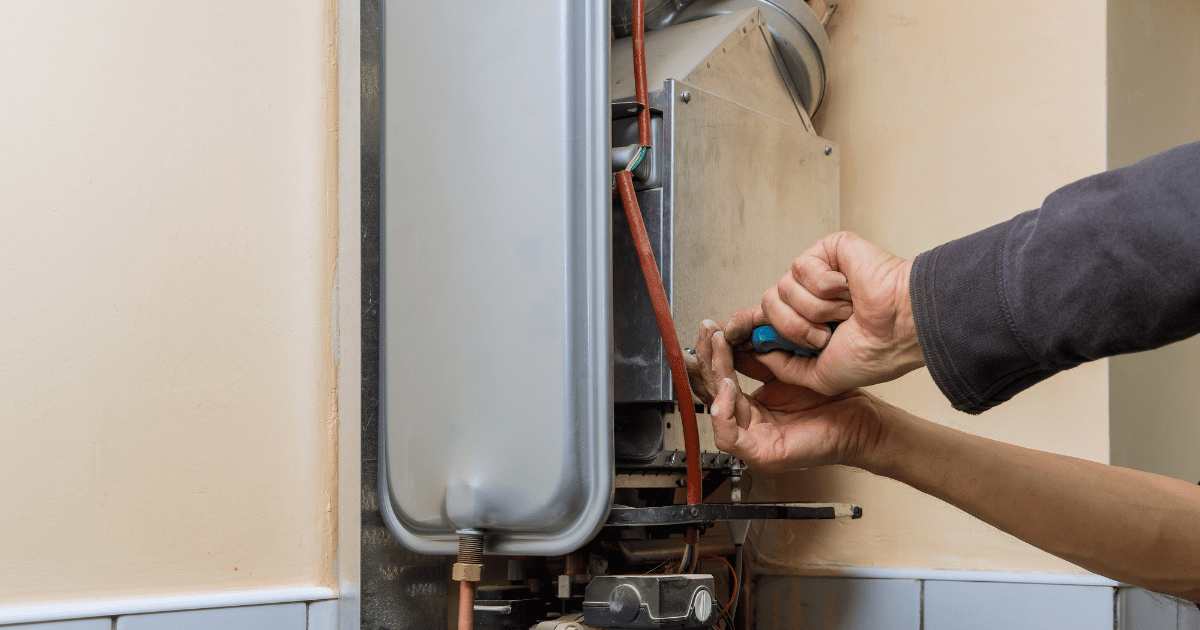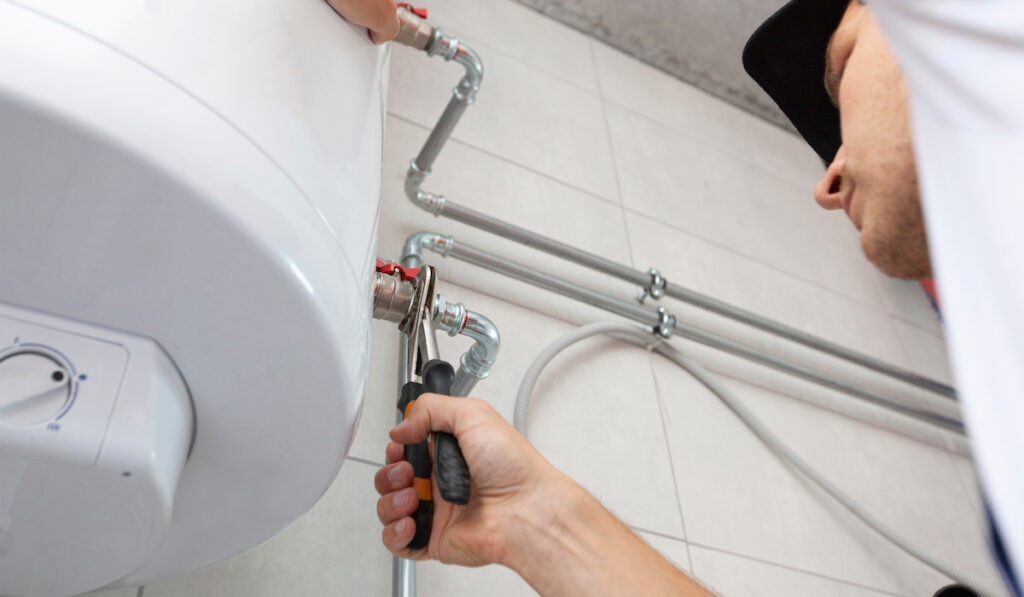Easy Guide to Maintaining Your Home's Hot Water System
Easy Guide to Maintaining Your Home's Hot Water System
Blog Article
We have found this post pertaining to Water Heater Maintenance Tips You Can't Afford to Forget down the page on the net and concluded it made good sense to talk about it with you in this article.

Warm water is vital for daily convenience, whether it's for a rejuvenating shower or washing recipes. To ensure your warm water system runs effectively and lasts much longer, regular upkeep is key. This write-up supplies practical pointers and insights on how to preserve your home's warm water system to avoid disruptions and expensive repairs.
Introduction
Maintaining your home's hot water system could seem daunting, yet with a few basic actions, you can ensure it runs smoothly for several years to find. This overview covers whatever from understanding your warm water system to DIY upkeep tips and understanding when to call professional aid.
Significance of Preserving Your Warm Water System
Regular maintenance not just expands the lifespan of your hot water system yet additionally ensures it operates effectively. Disregarding maintenance can result in reduced performance, greater energy expenses, and also early failing of the system.
Indicators Your Hot Water System Requirements Upkeep
Knowing when your hot water system needs focus can prevent major issues. Watch out for indications such as irregular water temperature, weird sounds from the heater, or rusty water.
Comprehending Your Hot Water System
Before diving into maintenance tasks, it's valuable to recognize the standard parts of your warm water system. Typically, this consists of the hot water heater itself, pipelines, anode poles, and temperature level controls.
Month-to-month Upkeep Tasks
Regular monthly checks can help catch small concerns prior to they rise.
Purging the Hot Water Heater
Purging your hot water heater eliminates sediment build-up, boosting performance and lengthening its life.
Monitoring and Changing Anode Rods
Anode poles stop rust inside the storage tank. Checking and changing them when worn is important.
Examining and Adjusting Temperature Level Setups
Readjusting the temperature level settings guarantees optimal performance and safety and security.
Do It Yourself Tips for Upkeep
You can do a number of maintenance tasks on your own to maintain your hot water system in top condition.
Looking for Leakages
Frequently inspect pipes and links for leakages, as these can bring about water damages and higher bills.
Examining Stress Relief Valves
Evaluating the stress safety valve ensures it functions appropriately and stops extreme pressure build-up.
Protecting Pipes
Insulating warm water pipes reduces warmth loss and can conserve energy.
When to Call a Specialist
While do it yourself maintenance is beneficial, some concerns need professional experience.
Complicated Issues Calling For Expert Help
Instances include major leakages, electrical troubles, or if your water heater is consistently underperforming.
Regular Professional Upkeep Advantages
Professional upkeep can include complete evaluations, tune-ups, and ensuring conformity with safety criteria.
Conclusion
Normal maintenance of your home's warm water system is important for performance, durability, and price savings. By adhering to these suggestions and recognizing when to seek specialist help, you can make sure a dependable supply of hot water without unanticipated interruptions.
Water Heater Maintenance: The Basics
Maintaining your water heater will ensure it operates efficiently and has a longer lifespan. Neglecting regular maintenance can lead to costly repairs and an even bigger chunk of your savings if you have to replace it sooner than necessary. But there’s good news: Most water heater maintenance tasks are relatively simple and easy for homeowners with basic DIY skills.
Flush the Water Heater
Over time, sediment and minerals can build up in the tank, reducing its efficiency and potentially causing damage. To flush the tank, turn off the power or gas supply, attach a hose to the drain valve near the bottom and open the valve to drain the water until it runs clear. Ideally, flush the tank annually.
Replace the Anode Rod
The anode rod is a sacrificial metal rod that helps prevent corrosion inside the tank. Inspect and replace it every three to five years or per the manufacturer's recommendation. To replace the anode rod, turn off the power or gas supply, drain a few gallons of water from the tank, unscrew the old rod and replace it with a new one. If the anode rod is significantly corroded or covered in calcium buildup, it's a sign the water heater may need to be replaced soon.
Tune-Up
A yearly tune-up can help identify potential issues and ensure your water heater operates at peak efficiency. This typically involves checking the thermostat, burner assembly (for gas heaters) and any other components specified by the manufacturer. During a tune-up, the technician may also clean the burner and adjust the pilot light (for gas heaters) or examine the heating elements (for electric heaters).
How to Maintain Your Water Heater
Insulate the tank. Insulating the tank can improve energy efficiency and reduce heat loss, saving you money on energy bills. You can purchase precut insulation blankets designed specifically for water heaters or use standard fiberglass insulation wrapped securely around the tank. Check the temperature. The recommended water temperature for most households is around 120 degrees Fahrenheit (49 degrees Celsius). Higher temperatures can increase energy costs and potentially cause scalding. Use a kitchen thermometer to check the temperature at the faucet nearest the water heater. Monitor water pressure. Excessive water pressure can strain the water heater and cause leaks or even tank failure. Install a pressure-reducing valve if necessary. The ideal water pressure range is between 60 and 70 PSI (pounds per square inch). Test the temperature and pressure (T&P) relief valve. The T&P relief valve is a safety feature that releases pressure if the tank gets too hot or the pressure builds up too high. Test it annually by lifting the lever and allowing a small amount of water to release. Replace the valve if it doesn't release water or reseal properly. Check for leaks. Regularly inspect the tank, pipes and fittings for leaks or corrosion. Deal with issues promptly to prevent further damage. Even a small leak can lead to significant water damage over time. Consider a tankless water heater. If your traditional tank-style water heater is nearing the end of its lifespan ( typically 10 years), consider replacing it with a tankless water heater. These units heat water on demand, reducing standby energy losses and potentially saving you money on your energy bills. Schedule professional maintenance. While homeowners can perform many water heater maintenance tasks, it's still a good idea to schedule professional maintenance every few years. A plumber or HVAC technician can thoroughly inspect the unit, identify potential issues and ensure it operates safely and efficiently. https://www.homeserve.com/en-us/blog/home-improvement/hot-water-heater-maintanence/

I ran across that blog entry about Water Heater Maintenance Tips You Can't Afford to Forget while doing a search on the internet. Are you aware of anybody else who is fascinated about the niche? Do not hesitate to promote it. We recognize the value of your readership.
Schedule Your Service Report this page